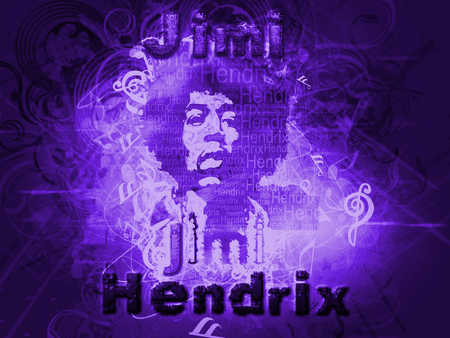
Jimi Hendrix didn’t just change the face of rock music with his electrifying performances and innovative guitar skills; he left an unforgettable legacy that still resonates with fans, even half a century after his passing. As Hendrix soared to stardom, his influence reached far beyond music, leaving an indelible mark on various facets of culture and art. Perhaps the most unique tribute to the legend is NetEnt’s Jimi Hendrix online slot, a testament to his timeless impact. This exciting casino slot game was launched 46 years after his untimely death.
Hendrix’s First Contact with Musical Instruments
In his youth, Jimi Hendrix’s musical passion took an unconventional path – he used a broom as a makeshift guitar, catching the attention of a school social worker who sought funding for a real guitar. In 1957, while helping his father, he found a one-stringed ukulele discarded by an elderly woman. Self-taught, he emulated Elvis Presley’s tunes, like “Hound Dog.”
At age 15 in 1958, Hendrix acquired his first acoustic guitar for $5, dedicating himself to learning from blues legends. He often played alongside his childhood friend Sammy Drain and Sammy’s brother, who played the keyboard. After attending a Hank Ballard & The Midnighters concert in 1959, Hendrix learned from their guitarist, Billy Davis, and briefly joined the band.
By mid-1959, his father bought him a white Supro Ozark. While his early performances had ups and downs, he later joined the Rocking Kings, performing at venues like the Birdland Club. However, a setback occurred when his guitar was stolen backstage, prompting his father to replace it with a red Silvertone Danelectro.
The Beginning of Hendrix’s Musical Career
Jimi Hendrix began his music journey on the Chitlin’ Circuit, a network of clubs catering primarily to African-American audiences in the Eastern and Southern United States. Alongside leading his band, he showcased his guitar prowess as a sideman for soul, R&B, and blues artists, including Wilson Pickett, Slim Harpo, Sam Cooke, Ike & Tina Turner, and Jackie Wilson.
In 1966, seeking to break free from the confines of R&B, Hendrix made his way to New York City’s Greenwich Village. He secured a residency at Cafe Wha? on MacDougal Street, where he formed his band, Jimmy James and the Blue Flames, with Randy California, who would later join Spirit. This marked the beginning of their performances across various New York clubs.
Success in the UK – The Jimi Hendrix Experience
Hendrix met Chas Chandler, a British talent scout, at Cafe Wha. Chandler launched Hendrix’s UK career. There, he met Eric Clapton and played excellently with Mitchell and Redding. Despite being a trio, they produced a sound that seemed more like a quintet, thanks to Hendrix’s exceptional guitar techniques and the nuanced sounds he effortlessly got out from his guitar.
Later, the three formed the Jimi Hendrix Experience, playing a unique fusion of hard rock with psychedelic undertones and groovy tunes. They quickly became a sensation in the UK, captivating audiences such as the Rolling Stones or the Beatles that were eager to see them perform live. Shortly afterward, the Jimi Hendrix Experience also became a hit in the US. Their performance at the Monterey Pop Festival in 1967 is iconic, and he started being considered a national treasure afterward.
Always Offering a Complete Show
Always delivering a complete show, Jimi Hendrix went beyond his incredible guitar skills to captivate his audience. He demanded attention, fully immersing himself in his music. His body swayed to the rhythm, he’d kneel, lie on his back, and play with his eyes closed. Adding a layer of showmanship, he’d even pluck the guitar behind his head or with his teeth for a dramatic flair.
Hendrix was renowned for his flamboyant stage performances, often including energetic acts like plunging his Fender Stratocaster into his amplifier or, on occasion, setting it ablaze with lighter fluid. These theatrical displays became iconic features of his shows, underscoring his passionate and unconventional approach to music and performance art.
The 1969 Woodstock Festival marked a pivotal moment in Jimi’s career. He stunned the crowd by playing the US national anthem solely with his Fender Stratocaster and an effects unit. Yet, he swiftly transitioned to crafting a soundscape that evoked bombs and machine guns firing, an apparent commentary on the Vietnam War.
At Woodstock, Jimi Hendrix emerged as an icon of counterculture, embodying the values of Native Americans, the struggles of African Americans, and the peaceful protests of the hippie movement all at once.
Final Chapter
Jimi Hendrix’s last performance occurred at the Open Air Love & Peace Festival on the Isle of Fehmarn in West Germany on September 6, 1970. Tragically, less than two weeks later, on September 18, Hendrix passed away in London. The circumstances surrounding his death involved a tragic accident with sleeping pills given to him by his girlfriend to aid his insomnia. Unaware of their strength, which was significantly more than he was accustomed to in the US, Hendrix accidentally overdosed on these tablets.
Jimi Hendrix’s global fame lasted just four short years. However, during this short period, he changed the fundamentals of guitar playing for good. While other guitarists worldwide can play cleaner, faster, or even better than Hendrix, he is the best rock guitarist of all time for many. And it was the man behind the guitar that was the actual icon.
